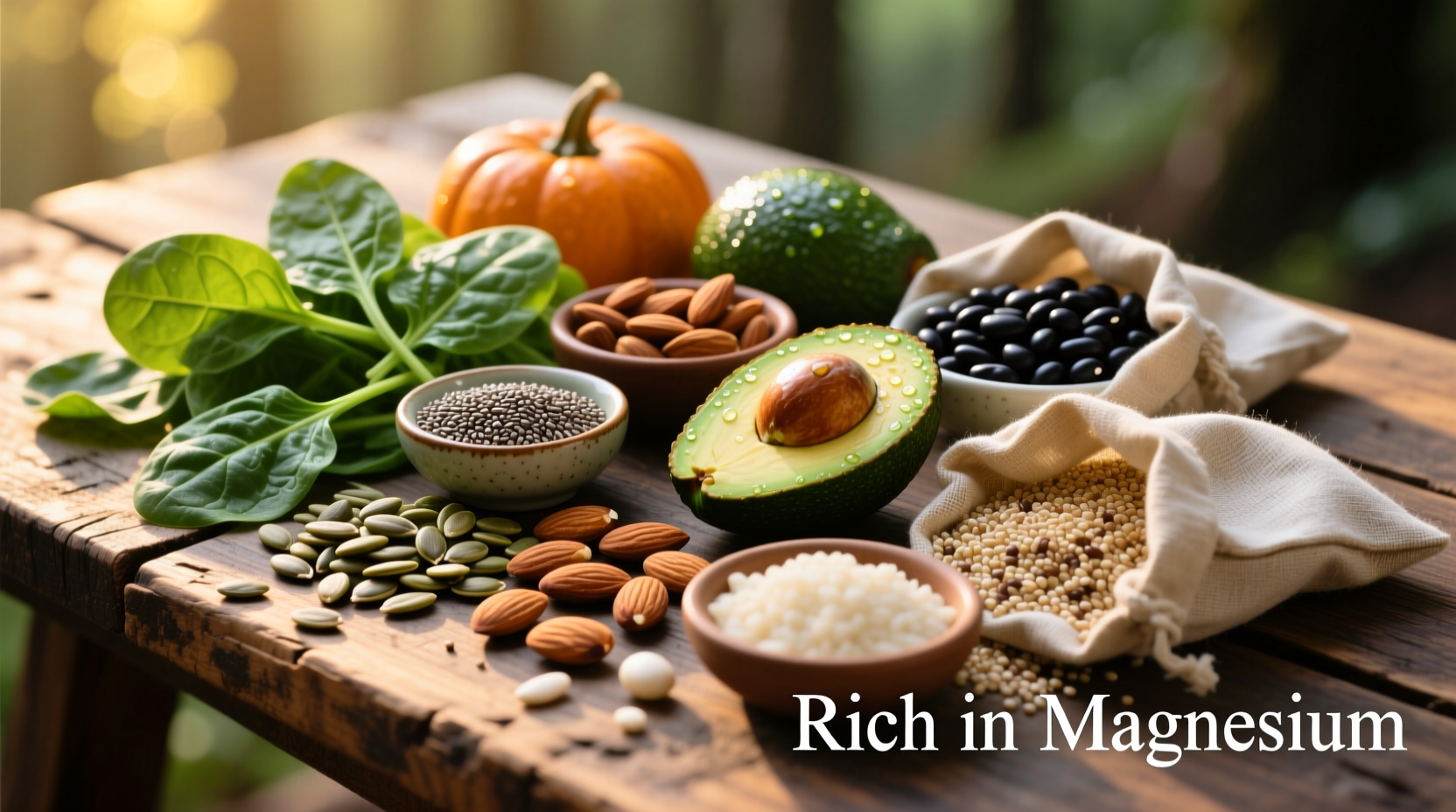Discover how these everyday foods can transform your health while meeting 20-50% of your daily magnesium requirements in a single serving. Magnesium deficiency affects nearly 50% of Americans, yet most aren't aware they're missing this critical mineral that regulates over 300 biochemical reactions in your body.
Why Your Body Needs Magnesium Daily
Magnesium isn't just another mineral—it's your body's multitasking powerhouse. This essential nutrient supports nerve function, muscle contraction, blood sugar control, and blood pressure regulation. According to the National Institutes of Health, approximately 48% of Americans don't get enough magnesium from their diet alone, potentially contributing to muscle cramps, fatigue, and even cardiovascular issues.
Top Magnesium Food Sources by Category
Nuts and Seeds: Magnesium Powerhouses
These portable snacks deliver impressive magnesium concentrations. One ounce of pumpkin seeds provides 37% of your daily requirement, while almonds offer 20%. Chia seeds and flaxseeds also pack substantial amounts along with beneficial omega-3 fatty acids.
| Food | Serving Size | Magnesium (mg) | % Daily Value |
|---|---|---|---|
| Pumpkin seeds | 1 ounce (28g) | 156 | 37% |
| Almonds | 1 ounce (28g) | 80 | 20% |
| Chia seeds | 1 ounce (28g) | 95 | 23% |
| Flaxseeds | 2 tablespoons | 77 | 19% |
Leafy Greens: Nature's Magnesium Boosters
Dark leafy greens offer magnesium alongside other essential nutrients. Cooked spinach provides 78mg per 1/2 cup serving, while Swiss chard delivers 75mg. These vegetables contain chlorophyll—the green pigment that features magnesium at its molecular center.
Legumes: Budget-Friendly Magnesium Sources
Black beans, kidney beans, and edamame provide substantial magnesium along with plant-based protein and fiber. One 1/2 cup serving of black beans contains 60mg of magnesium. The USDA FoodData Central confirms that legumes maintain their magnesium content even after cooking, making them reliable dietary sources.
Whole Grains: Magnesium-Rich Carbohydrates
Unlike refined grains, whole grains retain their magnesium-rich bran and germ. One cup of cooked quinoa provides 118mg, while brown rice offers 84mg per cup. The magnesium content decreases significantly when grains are refined—a critical context boundary for maximizing nutrient intake.
Fish: Magnesium with Heart-Healthy Benefits
Fatty fish like salmon and mackerel provide magnesium alongside omega-3 fatty acids. A 3-ounce serving of salmon contains 26mg of magnesium. Research from the American Heart Association shows that combining magnesium-rich foods with heart-healthy fats creates synergistic cardiovascular benefits.

Daily Magnesium Requirements Demystified
Your magnesium needs vary by age and gender. Adult men require 400-420mg daily, while women need 310-320mg. Pregnant women should aim for 350-360mg. The Harvard T.H. Chan School of Public Health emphasizes that these requirements increase for athletes, those under chronic stress, and people with certain medical conditions.
Practical Strategies for Maximizing Magnesium Intake
Boost your magnesium absorption by pairing magnesium-rich foods with vitamin D sources. Avoid consuming high-phytate foods (like unsoaked grains) with magnesium sources, as phytates can inhibit absorption. Try these simple strategies:
- Add pumpkin seeds to morning yogurt or oatmeal
- Replace refined grains with quinoa or brown rice
- Snack on a small handful of almonds between meals
- Include spinach in smoothies (cooking increases bioavailability)
- Choose black beans in salads instead of chickpeas
Understanding Magnesium Absorption Factors
Your body absorbs magnesium differently depending on food preparation and combination. Cooking greens increases magnesium bioavailability by breaking down cell walls. However, high-fiber foods can sometimes reduce absorption—a context boundary worth noting. The National Institutes of Health reports that magnesium absorption decreases as intake increases, making consistent daily consumption more effective than occasional large doses.
Recognizing Magnesium Deficiency Symptoms
Subtle signs of magnesium deficiency include muscle cramps, fatigue, irregular heartbeat, and sleep disturbances. More severe deficiency can contribute to osteoporosis and cardiovascular problems. If you experience persistent symptoms, consult a healthcare provider rather than self-diagnosing.











 浙公网安备
33010002000092号
浙公网安备
33010002000092号 浙B2-20120091-4
浙B2-20120091-4